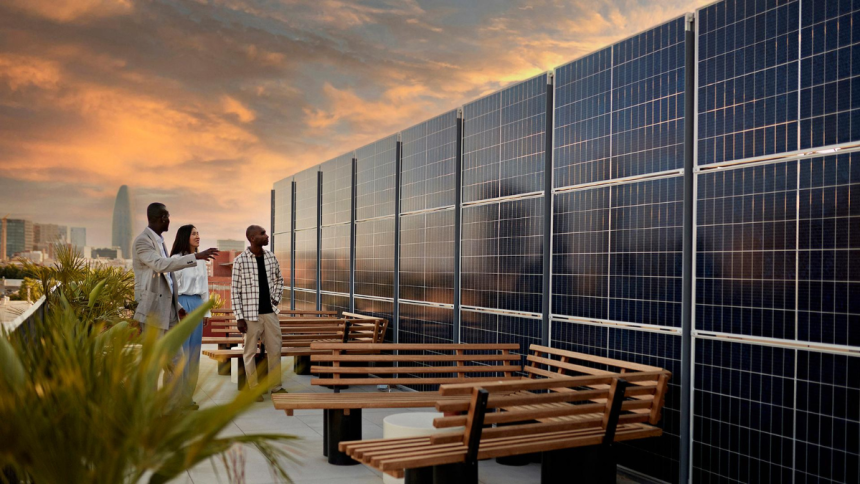The renewable energy industry keeps changing from time to time. The framework of the Section 48 investment tax credit (ITC) has seen a shift with the ‘Inflation Reduction Act (IRA)’ and the more recent ‘One Big Beautiful Bill Act (OBBBA)’. Due to this change, businesses, investors, and developers are facing both opportunities and challenges while planning their projects.
Read on to know the evolution of the Section 48 investment tax credit, recent updates, and what to expect in the future.
Section 48 Investment Tax Credit (ITC)?
The section allowing businesses to claim a tax credit based on a percentage of the cost of qualifying energy property is the Section 48 investment tax credit. On a traditional basis, this is applied to solar, wind, fuel cells, and other renewable technologies.
- Purpose: The section is there to encourage investment in clean energy projects
- Benefit: Businesses enjoy lower upfront capital costs
- Flexibility: There were several safe harbors for “beginning of construction” that were there previously.
This credit has been a main motivator of renewable energy growth in the US. But with the IRA and OBBBA, the rules are changing.
Major Changes Under OBBBA and IRA Updates
Having a look at the main alterations/updates under the two acts is helpful if you are planning to kickstart any project.
Phase-Out for Wind and Solar Projects
- End date: Section 48 ITC for solar and wind ends for projects placed in service after December 31, 2027, unless construction began before July 4, 2026.
- Grandfathering: Projects that started before January 1, 2025 remain eligible for pre-IRA rules.
This means the window is closing. Developers must plan construction timelines carefully to qualify.
New Rules for “Beginning of Construction”
An executive order (July 7, 2025) requires the Treasury to tighten the definition of “beginning of construction.”
Broad safe harbors used in the past may no longer apply.
This adds a layer of uncertainty for project planning.
Regulatory Uncertainty and Its Business Impact
The ITC landscape is now tied closely to federal guidance and executive orders. Many details are still not clear because the Treasury guidance is still due.
- Challenge: Developers still have to wait to break ground until all the rules are final.
- Impact: Delays in financing and construction pipelines.
- Tip: Build flexible project models that can adjust to different guidance outcomes.
Transition to Technology-Neutral Credits (Section 48E)
The traditional Section 48 ITC is gradually giving way to the Clean Electricity Investment Credit (Section 48E).
Effective 2025 onwards for new projects
Technology-neutral: The projects that generate electricity without emitting any greenhouse gases can qualify.
More flexible than the old credit
This shift aims to support innovation beyond just wind and solar.
Impact on Other Technologies
Not all technologies are affected the same way.
| Technology | Credit Phase-Out Details | Notes |
| Energy Storage and Fuel Cells | Section 48E ITC phases out starting in 2034 (75%), 2035 (50%), gone by 2036 | Long runway for planning |
| Residential Solar | Ends after 2025 | Homeowners lose access from 2026 |
| Commercial Clean Energy | Covered under Section 48E | Broader coverage for zero-emission tech |
For businesses, the extended runway for storage and fuel cells is positive. But the end of residential solar credits may shift demand toward commercial-scale projects.
Foreign Entity of Concern (FEOC) Restrictions
Projects linked to certain foreign entities will no longer qualify for credits.
Ownership, control, or even material assistance from restricted entities can disqualify a project.
This rule will impact supply chain decisions, financing, and partnerships.
Supply Chain Strategy Under FEOC Rules
FEOC restrictions mean businesses cannot rely on certain overseas suppliers.
- Risk: Projects may be disqualified if components trace back to restricted entities.
- Solution: Localize supply chains and increase supplier due diligence.
- Opportunity: US-based manufacturing and allied partners could see rising demand.
What Does This Mean for Stakeholders?
The updates carry different implications depending on your role.
For Developers
- Act fast: The developers associated with wind and solar need to move quickly before the 2027 deadline.
- Documentation matters: They have to properly record the “beginning of construction” to safeguard eligibility.
- Diversify: Also, look at storage, fuel cells, and other eligible technologies.
For Investors
- Shift focus: Move from traditional ITC projects to technology-neutral opportunities.
- Evaluate risk: New FEOC rules increase compliance risks.
- Leverage transferability: Tax credit transfer options remain valuable for investors.
For Non-Taxable Entities
- Direct pay remains in place, making projects viable for entities without tax liability.
Practical Tips for Businesses
Here are some steps to consider when planning around the new Section 48 ITC framework:
- Map out timelines
- Identify project start dates and align them with credit deadlines.
- Review supply chain
- Ensure no material involvement from restricted foreign entities.
- Reassess project mix
- Include storage and fuel cells for long-term credit opportunities.
- Engage tax professionals
- The rules are changing fast. Professional guidance helps avoid costly errors.
Looking Ahead: Opportunities Beyond 2027
The end of Section 48 ITC for wind and solar does not mean the end of incentives. Instead, the system is shifting:
- From technology-specific to technology-neutral
- From broad safe harbors to stricter compliance
- From limited monetization to flexible transfer and direct pay
This evolution encourages innovation in emerging clean energy solutions.
Strategic Path Forward
For B2B players, the strategy should balance short-term gains with long-term positioning.
- Short-term: Maximize Section 48 ITC before phase-outs.
- Mid-term: Expand into Section 48E-eligible projects.
- Long-term: Build resilient supply chains and financing models aligned with evolving clean energy policy.
Conclusion
The future of the Section 48 investment tax credit is one of transition. The time is quickly passing for wind and solar developers because there are phase-outs and stricter rules. The time is longer and more promising for storage, fuel cells, and new clean technologies.
The main thing for businesses and investors to note is timing, compliance and diversification. If you want to continue to benefit from the evolving clean energy credit, then:
- Act early
- Document carefully
- Adapt your strategies
Therefore, the Section 48 Investment Tax Credit may be changing, but the opportunities for renewable energy investment remain strong. They are just in new forms.
Lynn Martelli is an editor at Readability. She received her MFA in Creative Writing from Antioch University and has worked as an editor for over 10 years. Lynn has edited a wide variety of books, including fiction, non-fiction, memoirs, and more. In her free time, Lynn enjoys reading, writing, and spending time with her family and friends.















